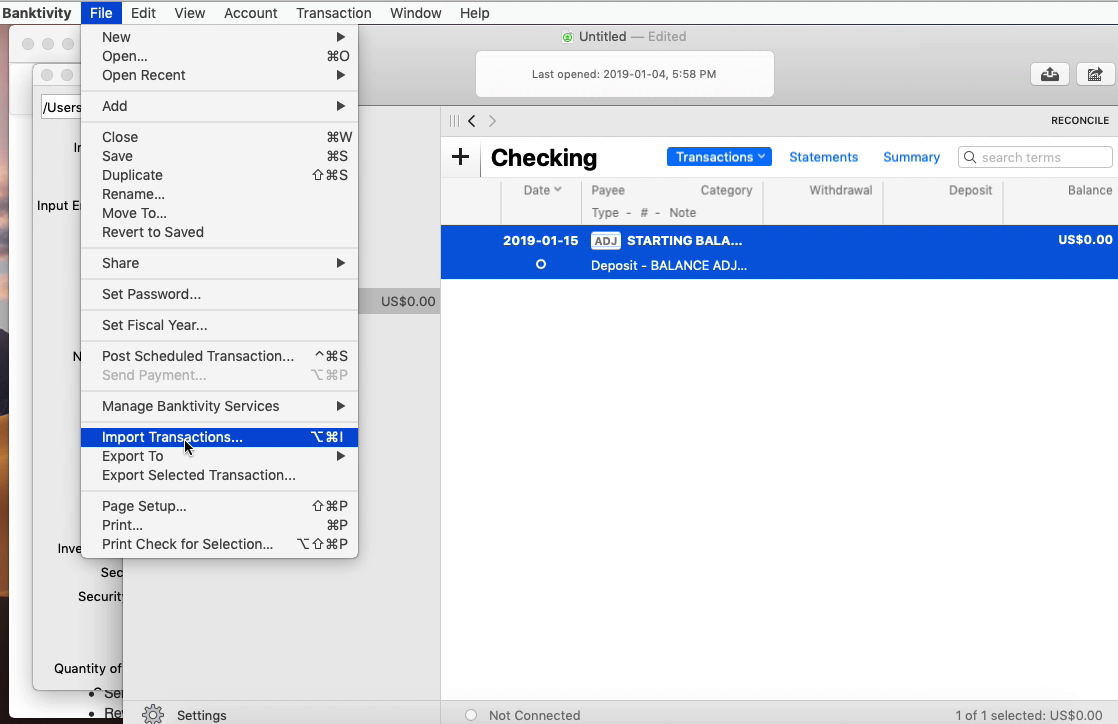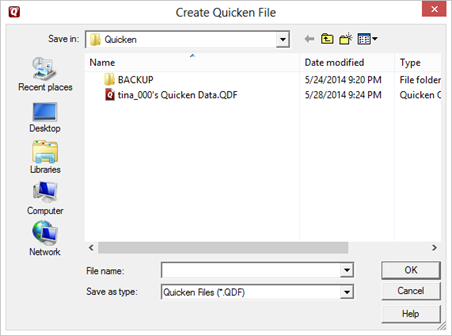

- #Quicken file extension backup file manual
- #Quicken file extension backup file full
- #Quicken file extension backup file verification
Note: This file is created during backup provided that you have set a verification level. In case of accidental loss of data, Intuit Technical Support can use your most recent backup in conjunction with the transaction log file to recover your data. When you backup an Accountant's review copy, QuickBooks® starts a log of transaction that you have entered since the last backup. Transaction Log File for Accountant's Copy
#Quicken file extension backup file manual
TLG file is too large, create a manual backup. Note: A manual backup (not an automatic backup) is required to 'reset' the.
#Quicken file extension backup file full
This allows ongoing syncs to happen much more quickly than the initial full upload of QuickBooks® data into your online service. This log file is also used if you sync your QuickBooks® data with certain online services using Intuit Sync Manager. When you backup a company file, QuickBooks® starts a log of transaction that you have entered since the last backup. Transaction Log File for QuickBooks® company file The table below describes a few of these file extensions.


QuickBooks® also uses many other file extensions to access or store other types of data associated with QuickBooks®. QBA file in order to enter transactions and run reports. QBX file they must restore and convert it to a. This includes a Dividing Date which prevents the client from creating transactions on or before this date. This is also a compressed file format and it is used specifically for transferring a file from an end user (client) to an accountant for review. It is useful for transferring data through the Internet because the data file size is much smaller than any of the other file types and it can be restored to the full. This is a compressed file that contains all of the data of a QuickBooks® company file, but not the database indexing, so it is much smaller than the. Double-clicking the file and choosing Open from the File menu will NOT restore or open a backup file. QBB file, go to the File menu and click Restore. When you create a backup, QuickBooks® starts a log of transactions (.TLG) that you have entered since the last time you backed up. Use a backup file to safeguard your QuickBooks® files against accidental data loss. All of your data is entered into this file.Ī backup file is a compressed file containing everything you need to recreate your company file and QuickBooks® environment. This is the main file type for a QuickBooks® company file. The table below describes these file extensions. There are five (5) main file extensions used for holding transactions and data for a QuickBooks® company file. It is important for accounting professionals to understand the different file types and file extensions involved with QuickBooks®.


 0 kommentar(er)
0 kommentar(er)
